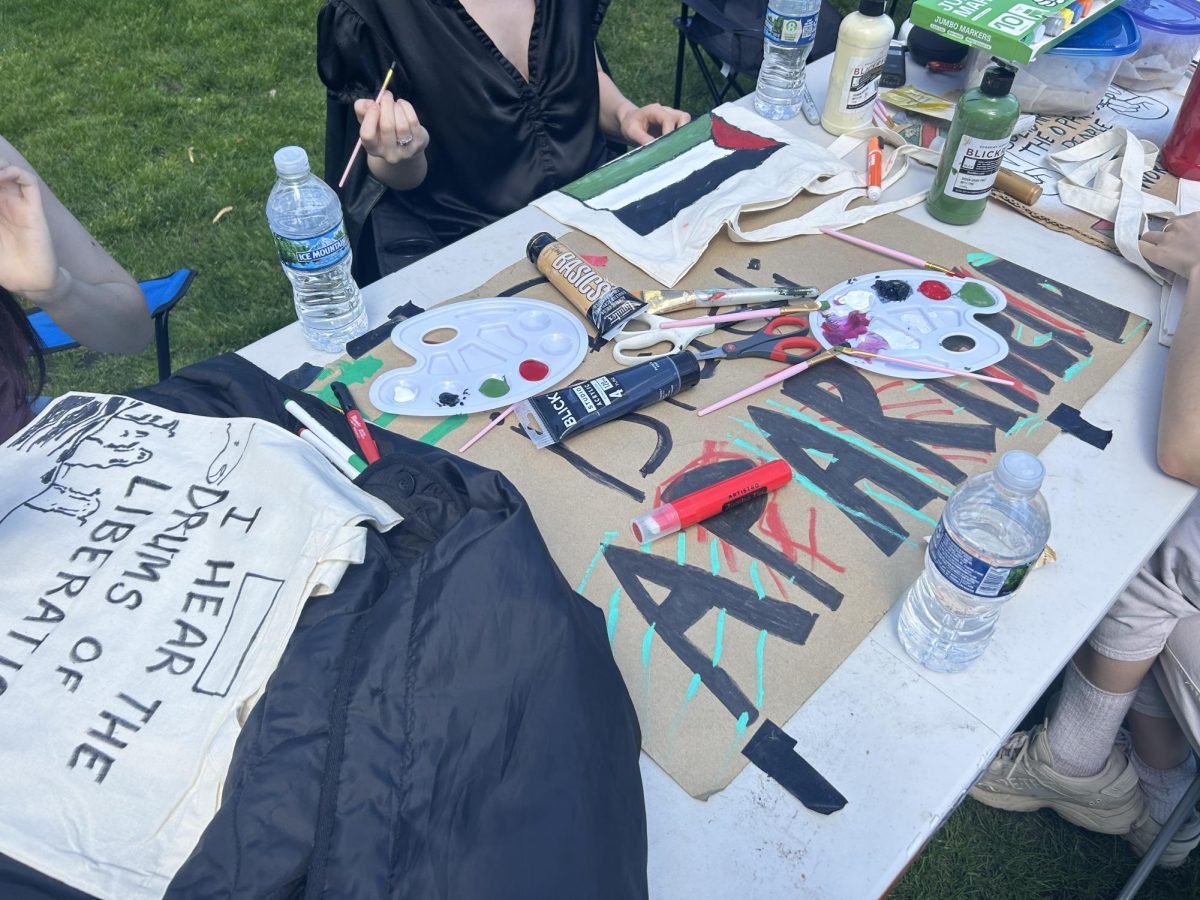An art build and keffiyeh history lesson on Deering Meadow kicked off Palestine Week programming on Saturday. The Middle Eastern North African Student Association, Educators for Justice in Palestine, Students for Justice in Palestine, Jewish Voice for Peace and Fossil Free NU are co-hosting the week’s events.
An organizer affiliated with MENA said various Middle Eastern, African and Palestinian groups on campus have held Palestine Week for many years to observe Nakba Day — a commemoration of the displacement and deaths of Palestinians on May 15, 1948, following the establishment of the state of Israel.
The organizer said the week’s goal is to share Palestinian culture and educate students on Palestinian history and politics.
Palestine Week comes almost two weeks after University administration reached an agreement with organizers to deescalate a five-day pro-Palestinian encampment on Deering Meadow.
“The encampment and the agreement both brought us a lot of positive momentum that we’re going to use to keep pushing forward,” said an organizer who asked to remain anonymous for fear of retribution. “At the end of the day, everything we do is for Palestine.”
The groups dubbed Deering Meadow “Hind Meadow” to honor the death of a young Palestinian girl named Hind Rajab during the ongoing Israel-Hamas war.
Israel continues a ground and air offensive in Gaza following the militant group Hamas’ Oct. 7 attack on Israel, which killed about 1,200 people, according to Israeli authorities. Israel has killed more than 34,000 people in Gaza, according to Palestinian authorities.
During the event, the organizer presented a history lesson about the keffiyeh. The keffiyeh is a garment worn across the Middle East that protects against the sun and sand. Each region has distinctive colors and patterns, he said.
Palestinian locals often wear the black and white keffiyeh made up of three symbols — the fishnet, bold lines and olive leaves — each representing freedom, resilience and struggle, the organizer said.
The organizer said Palestinian “rebels” wore this keffiyeh during the British Mandate of Palestine to hide their faces and avoid arrests from revolting against the Balfour Declaration and its corresponding influx of Jewish immigration. He said many locals also chose to wear the keffiyeh in solidarity with the rebels, and the garment has become a “symbol of the Palestinian resistance and liberation movement.” Only one Palestinian keffiyeh factory remains in the area, he added.
Students also painted Palestinian flags, watermelons, keffiyeh patterns and quotes on tote bags. The red, white, black and green colors of watermelons became a popular Palestinian symbol following the 1967 Six-Day War in which Israel banned public displays of the Palestinian flag.
The organizer said the first day featured art because it plays a large role in Palestinian culture. Murals and images cover the West Bank barrier that separates Israel and Palestine, he added.
“As Palestinians and as Middle Eastern people, we always try to make beautiful things out of the worst of our situation,” the organizer said. “That’s some of the inspiration for today.”
The remainder of Palestine Week will include speakers, screenings and activities.
“We’re only here to uplift the Palestinian voice, the Palestinian culture, the Palestinian identity. We’ve done that in the past, and we’ve been doing that for 75 years,” he said. “Stop by, everyone is welcome. It’s all about peace, love and education.”
Email: kelleylu2027@u.northwestern.edu
X: @kelleylu_
Related Stories:
— Demonstrators stage pro-Palestinian May Day strike following encampment agreement
— Captured: Deering Meadow encampment reaches fourth night
— Palestinian-American activist Rami Nashashibi shares message of unity to Deering Meadow encampment



















